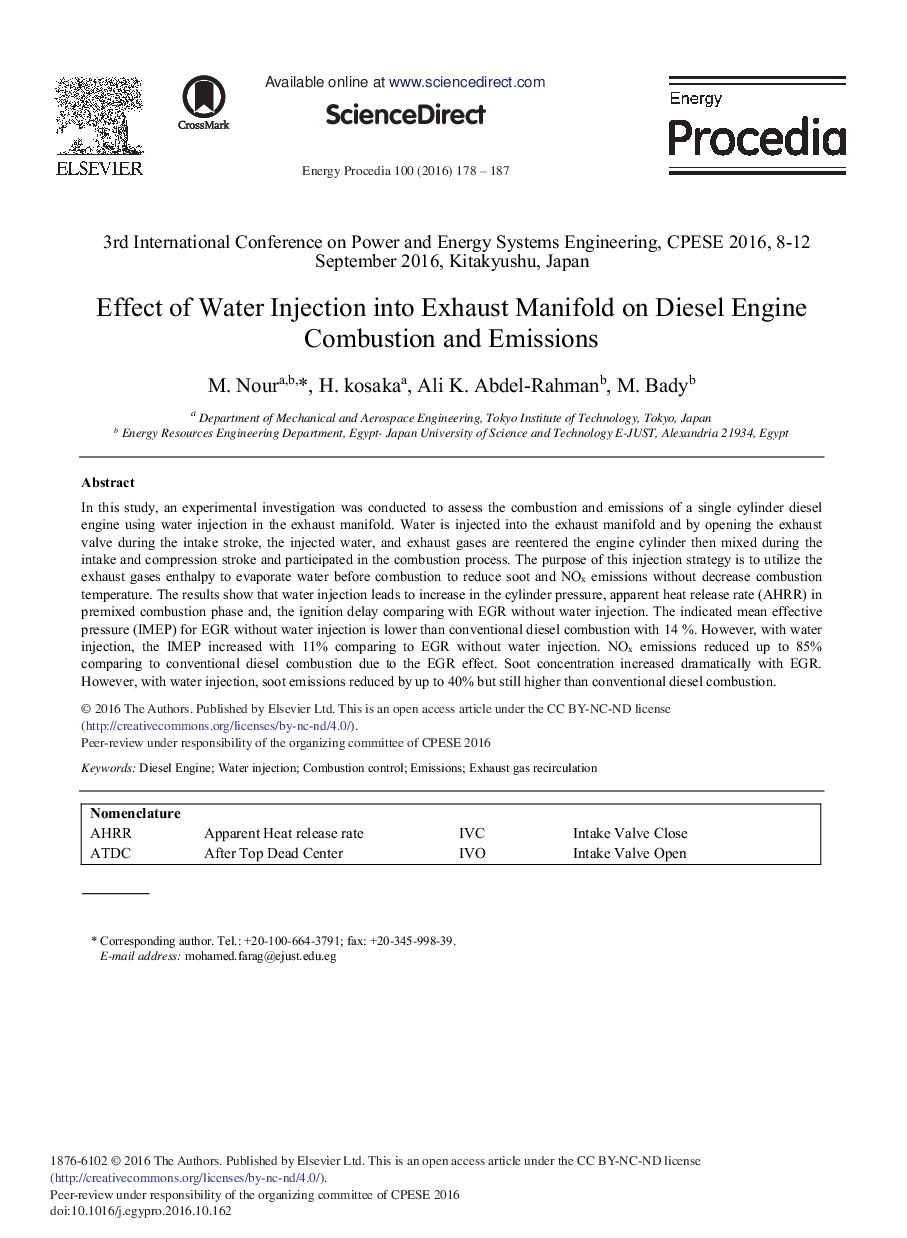| Article ID | Journal | Published Year | Pages | File Type |
|---|---|---|---|---|
| 5446100 | Energy Procedia | 2016 | 10 Pages |
Abstract
In this study, an experimental investigation was conducted to assess the combustion and emissions of a single cylinder diesel engine using water injection in the exhaust manifold. Water is injected into the exhaust manifold and by opening the exhaust valve during the intake stroke, the injected water, and exhaust gases are reentered the engine cylinder then mixed during the intake and compression stroke and participated in the combustion process. The purpose of this injection strategy is to utilize the exhaust gases enthalpy to evaporate water before combustion to reduce soot and NOx emissions without decrease combustion temperature. The results show that water injection leads to increase in the cylinder pressure, apparent heat release rate (AHRR) in premixed combustion phase and, the ignition delay comparing with EGR without water injection. The indicated mean effective pressure (IMEP) for EGR without water injection is lower than conventional diesel combustion with 14%. However, with water injection, the IMEP increased with 11% comparing to EGR without water injection. NOx emissions reduced up to 85% comparing to conventional diesel combustion due to the EGR effect. Soot concentration increased dramatically with EGR. However, with water injection, soot emissions reduced by up to 40% but still higher than conventional diesel combustion.
Related Topics
Physical Sciences and Engineering
Energy
Energy (General)
Authors
M. Nour, H. kosaka, Ali K. Abdel-Rahman, M. Bady,
